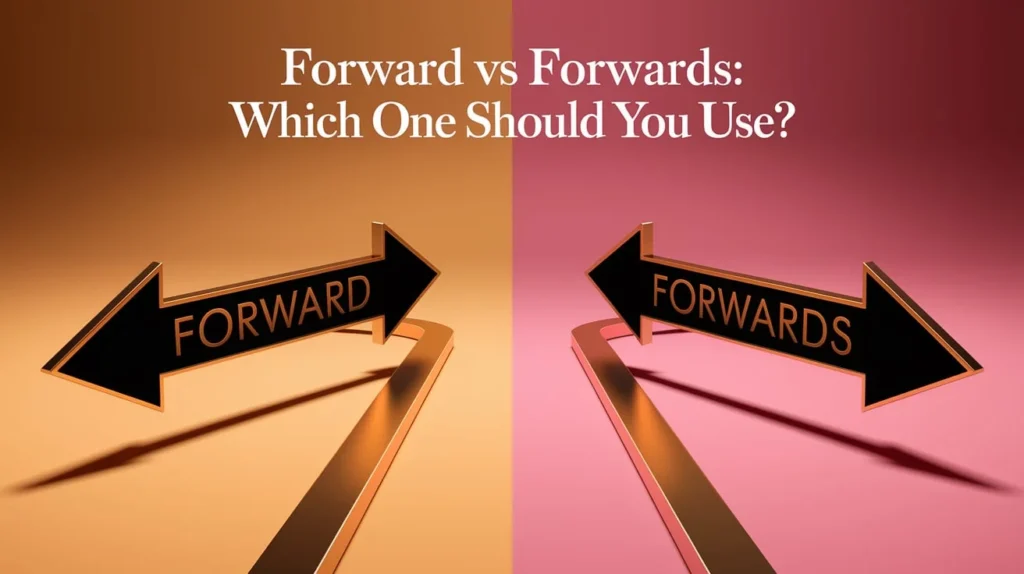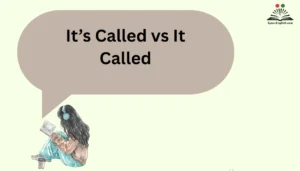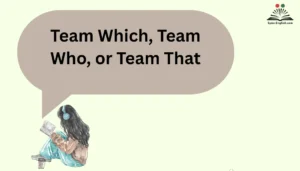English can be tricky, especially when it comes to words that seem almost identical but are actually quite different in usage. Take the words “forward” vs “forwards”. While they may look similar, their meanings, contexts, and grammar rules can sometimes confuse even the most seasoned writers.
In this article, we will dive into the differences between “forward” vs “forwards,” uncovering when and how to use each, and why understanding the distinction matters for clearer communication.
Why Is There Confusion Between “Forward” and “Forwards”?
Many people struggle with deciding whether to use “forward” or “forwards” in certain sentences. At first glance, the two words may seem like interchangeable synonyms. After all, both relate to movement or progress in some way. However, their usage differs based on context and grammar rules. The confusion is further compounded by regional variations, with British and American English sometimes using them in slightly different ways.
The root of the confusion lies in the dual nature of the word “forward.” In some cases, it acts as an adjective, a noun, or even a verb, while “forwards” is strictly an adverb. Understanding this subtle distinction is essential for ensuring you’re communicating your ideas correctly.
What Does the Word “Forward” Mean?
Forward is one of those versatile words in English. Depending on the context, it can function as an adjective, verb, or noun. Here’s a breakdown of its different uses:
As an Adjective:
- Definition: Something that is ahead, or in the direction of progress or improvement.
- Example: “We are looking forward to the upcoming event.”
As a Verb:
- Definition: To send or direct something ahead.
- Example: “I will forward the email to you later.”
As a Noun:
- Definition: The front or the direction toward which something is moving.
- Example: “She moved toward the forward of the ship.”
The key takeaway here is that “forward” is typically used when referring to movement in a direction or action.
What Does the Word “Forwards” Mean?
Forwards, on the other hand, is specifically an adverb, used to describe the direction of movement or the manner in which something happens. It’s typically used to express the action of moving ahead, often used in conjunction with verbs like “move,” “look,” or “step.”
As an Adverb:
- Definition: Referring to movement in the direction of the front or ahead.
- Example: “He walked forwards, determined to reach his goal.”
In Phrasal Expressions:
- Definition: Used in phrases like “step forwards” or “move forwards.”
- Example: “The team moved forwards with their plan.”
While “forward” can be used as different parts of speech, “forwards” is strictly an adverb, making it a bit easier to recognize when you need it.
“Forward” vs. “Forwards”: The Key Differences
Let’s clarify the differences in a simple comparison:
| Feature | Forward | Forwards |
| Part of Speech | Adjective, noun, verb | Adverb |
| Usage | Describes direction or action (noun/verb) | Describes the direction of movement (adverb) |
| Formality | Often more formal, used in professional settings | More commonly used in casual or colloquial contexts |
| Regional Preference | More common in American English | More common in British English |
Key Distinctions:
- Forward can also act as a verb or noun, while forwards is strictly an adverb.
- In many contexts, “forward” is preferred in formal, professional settings (e.g., “Please forward the document”).
- Forwards is more common in everyday, informal speech (e.g., “Step forwards and speak up!”).
Usage in Different English Variants
The usage of “forward” and “forwards” can also vary significantly between British and American English. Here’s how the two dialects tend to handle these words:
British English:
- “Forwards” is often used more frequently than “forward.” In the UK, “forwards” is commonly seen in both written and spoken English, especially in casual contexts.
American English:
- “Forward” tends to dominate in American English, especially in formal writing and business communication. However, “forwards” is still used, particularly in sports and everyday speech.
Australian and Canadian English:
- Australia: Primarily uses “forward,” though “forwards” is sometimes used in casual contexts.
- Canada: Tends to follow British English conventions, using both forms, but “forward” is more common.
Common Contexts Where Each Is Used
Each word has its place in different contexts, and understanding when to use each one is crucial. Here are some common scenarios:
In Business:
- “Forward” is typically used when referring to sending something or directing it ahead.
- Example: “Please forward the document to my email.”
In Sports:
- “Forwards” is more often used in sports like football and basketball to describe players who play near the front of the team formation.
- Example: “The forwards played an important role in scoring the goals.”
In Technology:
- “Forward” is frequently used in technological contexts, especially when referring to forwarding messages, data, or information.
- Example: “I will forward the email to the team.”
In Casual Language:
- “Forwards” is common when expressing movement, like “moving forwards,” “looking forwards,” or “stepping forwards.”
- Example: “She stepped forwards to speak to the crowd.”
British English Words Ending in ‘s’ vs American English
In British English, words ending in -s tend to be more common, particularly when describing directions or adverbs. For example, in the UK, you might hear “forwards” more often, while American English tends to prefer “forward” in many cases, especially when used as an adjective or verb.
For instance:
- British: “Move forwards” (common in everyday speech)
- American: “Move forward” (used more often in professional contexts)
This slight difference in preference highlights the importance of regional variations in English usage.
Examples of “Forward” and “Forwards” in Sentences
Examples Using “Forward”:
- As an adjective: “We are looking forward to the future.”
- As a noun: “The ship is moving forward toward the horizon.”
- As a verb: “Please forward my message to the manager.”
Examples Using “Forwards”:
- In a phrase: “Step forwards and introduce yourself.”
- In a motion: “He moved forwards with determination.”
- In sports: “The forwards dominated the match and scored three goals.”
Which One Should You Use: “Forward” or “Forwards”?
Now that we’ve explored the meanings and distinctions, let’s look at when to use each word:
- Use “forward” when:
- Referring to direction in a formal, professional, or technical context.
- Using it as a verb, noun, or adjective.
- Writing about future actions, such as “looking forward” or “move forward.”
- Use “forwards” when:
- Referring to direction in an informal context, especially in phrases like “step forwards” or “move forwards.”
- Talking about motion or movement.
- Describing the forward position of players in a sport.
Tips for Writers: Navigating Forward vs. Forwards
- Clarity is essential. Understand your audience and context before choosing “forward” or “forwards.”
- If you’re writing formally, “forward” is generally your best bet.
- For informal writing or spoken language, you can usually get away with “forwards.”
- When in doubt, try to simplify. If you’re not sure which one sounds right, consider the flow of your sentence and the tone you’re trying to convey.
Synonyms of “Forward” and “Forwards”
Understanding synonyms is helpful for varying your vocabulary and avoiding repetition. Here are some alternatives to “forward” and “forwards”:
Synonyms of “Forward”:
- Ahead
- Onward
- Progressing
- Advancing
Synonyms of “Forwards”:
- Ahead
- Onward
- In advance
- Moving
Origins of “Forward” and “Forwards”
Both “forward” vs “forwards” share the same Old English roots, derived from the word “forweard,” meaning “toward the front.” Over time, “forward” became more versatile, taking on additional grammatical roles, while “forwards” remained a simple adverb.
Understanding these linguistic roots can give insight into why these two words seem so interchangeable but ultimately serve different functions in modern English.
Conclusion
While “forward” and “forwards” may appear to be interchangeable, their usage varies depending on context, formality, and region. Knowing when to use each can enhance clarity and professionalism in your writing. Keep these guidelines in mind:
- Use “forward” for more formal, technical, or action-based contexts.
- Use “forwards” for motion, direction, or more casual settings.
Frequently Asked Questions (FAQs) about “Forward” vs “Forwards”
Can “forward” and “forwards” be used interchangeably?
No, while both words relate to movement or direction, they are not always interchangeable. “Forward” can be used as a verb, adjective, or noun, while “forwards” is strictly an adverb. The usage depends on the part of speech and the context.
Which one should I use in professional writing, “forward” or “forwards”?
In professional writing, it is best to use “forward” as it is more formal and commonly accepted in business and technical contexts. For example, “Please forward the document.”
Is “forwards” more commonly used in British English?
Yes, in British English, “forwards” is more commonly used in casual contexts. For instance, you may hear someone say, “Step forwards,” rather than “Step forward.”
Can I use “forwards” in American English?
Yes, “forwards” can be used in American English, especially in casual speech or sports contexts. However, “forward” tends to be the preferred form in professional and technical writing.
Are there any other regional differences between “forward” and “forwards”?
Yes, “forwards” is more frequent in British English and informal contexts, while “forward” is more common in American English and formal settings. This difference is mostly in spoken language, but the choice may vary based on the tone and the type of content.

Emma Rose is an experienced English educator, writer, and language enthusiast dedicated to helping learners unlock the full power of the English language. At SynoEnglish, she shares practical grammar tips, clear explanations, and real-world language insights to make learning both effective and enjoyable. With a passion for words and a love for clarity, Emma’s goal is to help readers speak and write with confidence.



